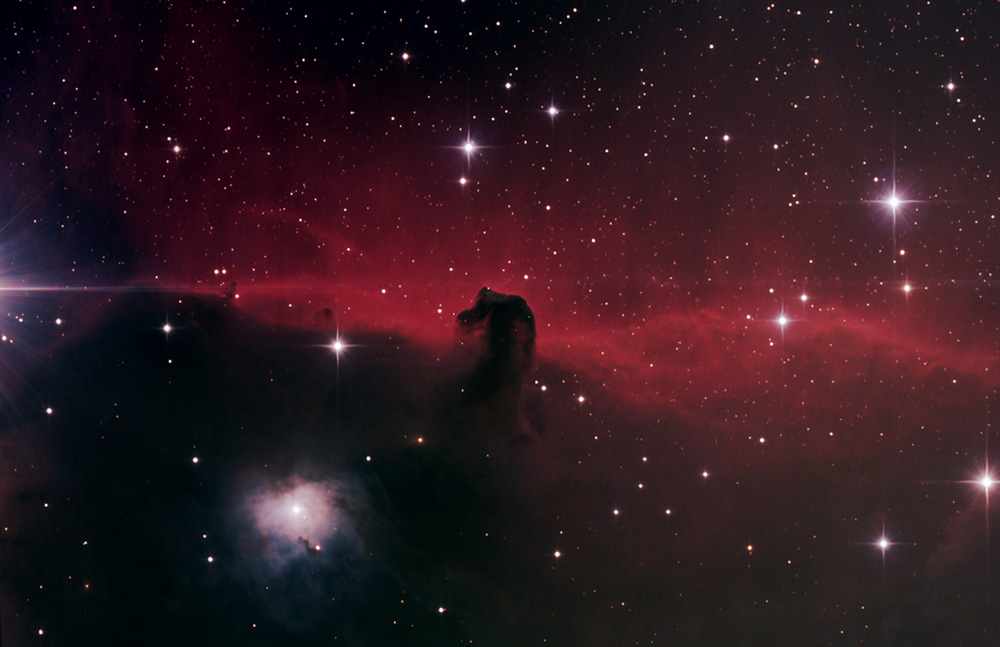 |
B33 - The Horsehead Nebula in Orion
 |
Copyright 2007 Hap Griffin
Many of the areas of the sky appear dark in photographs not because of a lack of stars or glowing nebulae, but because of great lanes of obscuring dust between our vantage point and the objects beyond. Such is the case with the Horsehead Nebula shown here...the most famous of all dark nebulae, and known as B33. The dust is the remnant of an older generation of stars that long ago died in great nova and supernova blasts spreading the heavy elements they synthesized from primordial hydrogen during their lives back into space. Spectral analysis reveals that the dust is composed largely of silicon, carbon and oxygen. Here we see brand new stars being formed out of this material...one can be seen on the horse's "brow" and another near the tip of its "nose" glowing dimly in red light as they come to life. These new star systems will likely eventually form terrestrial-type planets containing the heavy elements from the dust cloud from which they formed.
The Horsehead figure is actually a dynamic structure formed by the protrusion of a dense area of the larger dust cloud that can be seen at its base. It lies in front of and obscures an area of red glowing hydrogen, IC434. Parts of the base dust cloud can be seen partially obscuring the bright blue reflection nebula NGC2023 at the lower left. The structure is huge...between 12,000 and 13,000 of our own solar systems could be spread out across it's "neck". It is theorized that the Horsehead itself is a "Bok Globule" which will eventually break free from the main cloud and condense into individual stars. Examples of Bok Globules can be seen in the Rosette Nebula HERE.
B33 lies at a
distance of 1500 light years.
Date/Location:
November 16, 2007 Griffin/Hunter II Observatory Bethune, SC
Instrument: Canon 40D (modified IR filtering) Digital SLR through
10" Newtonian w/MPCC
Focal Ratio: f/ 4.7
Guiding: SBIG ST-237 through Orion ED80
Conditions: Cold and clear
Weather: 27 F
Exposure: 185 minutes total (37 x 5 minutes @ ISO 800)
Filters: Baader UV/IR block internal to camera
Processing: Focused and captured, RAW to TIFF conversion,
flat frame calibration, Digital Development, resizing and JPEG conversion in ImagesPlus. Color correction in Photoshop
CS2. Noise reduction in Neat Image.